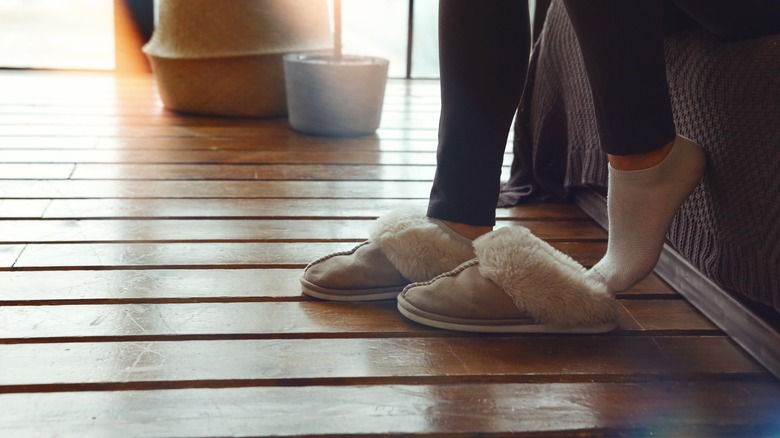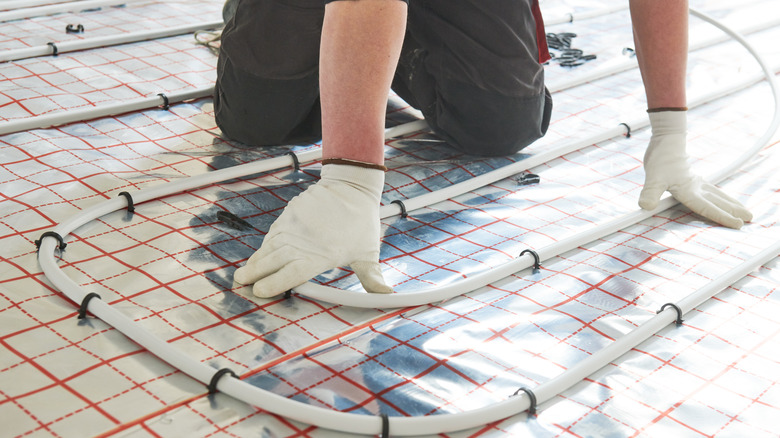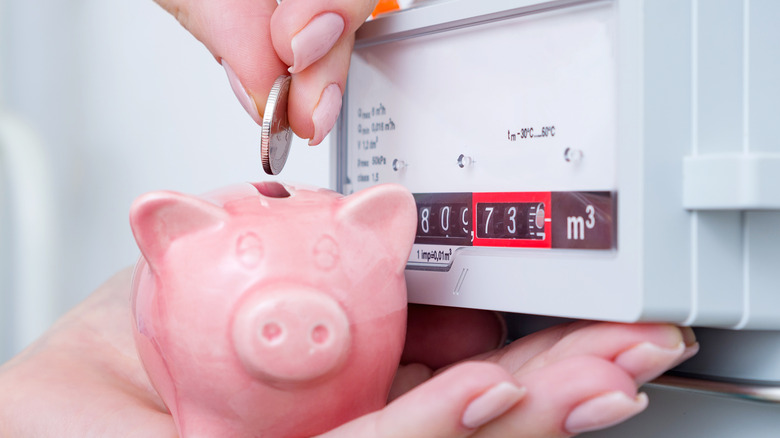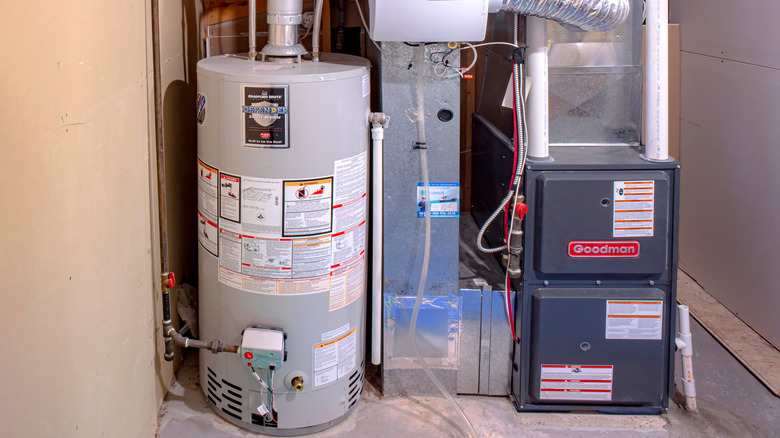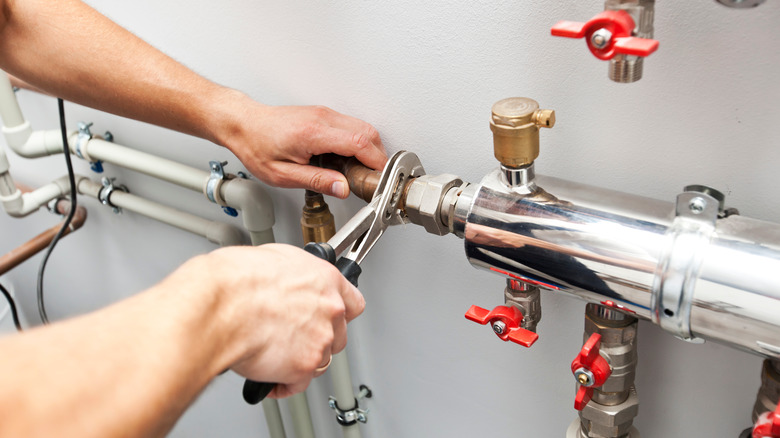How Much Do Heated Floors Cost?
Have you ever woken up on a cold winter morning and gotten out of bed only to be greeted by an ice-cold floor? HomeTips states that an average home heating system pushes warm air into a home through air ducts or sends heated water or steam through pipes located in radiators or convectors. Although these systems can successfully warm up a home, they still leave you walking on cold floors. There is, however, a new heating system that you can install in your home that will not leave your feet feeling cold. It's called a radiant heating system, and if you consider it, your feet will thank you.
The hydronic heated floor is the most popular of the three main types of heated floors, and it's also the most cost-effective of them all, ranging between $6 and $20 per square foot. Although the total price of a heated floor ultimately depends on the type of installation, where you wish to have the heater, and labor costs, you can expect to pay an average fee of $28,000, per the Forbes Advisor. Keeping your budget and vision in mind, let's look at what it takes to install a heated floor and discover which type is the best fit for you.
Factors for cost
Before starting a home project of this magnitude, it is crucial to analyze and break down all the associated expenses and elements needed for it to be successful. Let's take a moment to examine the factors that go into installing a heated floor system and how these factors can impact the cost of the overall project.
The type of flooring
Heated flooring can work with any floor, from concrete tiles to wood. But depending on the type of flooring, installation costs can vary widely. Bob Vila states that the most inexpensive flooring to install a heater under is vinyl, which usually costs between $2 and $15 per square foot. Concrete is also reasonably cheap, costing between $4 and $6 per square foot. On the other hand, Marble is much more challenging to work with; as such, it is priced between $12 and $60 per square foot.
The type of heated floor
There are three main varieties of heated flooring systems: air-heated, electric heated, and hydronic heated. The most commonly used in the average household are the electric and hydronic systems. Note that the type of heating system you choose can affect the overall cost. On average, per Bob Vila, an electric heated floor costs around $11 per square foot, while a hydronic heated floor costs slightly higher, $13 per square foot. However, the latter is better in the long run as it can retain heat throughout a broader range of flooring options. Although it costs a little more than the electric heated floor, it may be able to conserve more energy in the long run, ultimately saving you money.
Materials and labor
Materials and labor are the two most important factors to analyze when adding heated floors to your home. The materials are relatively cheap, and Bob Vila states that, on average, you shouldn't spend more than $2 per square foot. On the other hand, especially when hiring a highly experienced and professional crew, labor can be rather expensive. This is why we recommend adding between $8 and $12 per square foot to the cost of your materials.
Location
According to the Forbes Advisor, your location can significantly impact the overall cost when hiring a crew. For example, if the installation crew you want is far away, you may have to pay more to bring them to your house. Material suppliers may also include additional fees to make up for the distance if you live in a rural area or are far away from their operational zones.
Preparation and clean-up
Like every other home improvement project, preparations need to be made before the heated floors can be installed. These preparations can include moving furniture out of the area, removing the flooring, etc. These preparations will factor into the project's entire cost if you don't do them yourself. The same regards the clean-up process after the heating system has been installed, and the project has been completed, per Bob Vila.
Additional costs
When planning to install heated floors in your home, some additional costs and considerations may arise throughout the process. Let's take a look at a few of these.
Installation of hydronic heated floors
Hydronic heated floors are a heating system that runs hot water from a boiler through pipes underneath the floor to warm the bases of a home. Although this is one of the most cost-efficient types of heated floor, some extra costs may be hidden in the installation. Installing a hydronic heating system may also mean replacing your water boiler, depending on its age and efficiency. This, as Bob Vila states, can add between $817 and $1,596 to the cost of the project.
Operational costs
When installing a heated floor, you must understand that the cost of the system and its installation are not the only expenses you will incur. Using the heated floor regularly also comes with a price. However, this expense depends on the heated floor you decide to install. Bob Vila states that generally, running a heated floor can command between $1 and $5 per day, depending on fuel consumption and the size of the boiler.
Cooling systems
Once you have a heated floor, you may also need to consider a cooling system. While floor heating systems can also work for cooling, they are not ideal since it's characteristic for cool air to sink. This means that you need something more efficient; perhaps, a geothermal cooling unit can be installed into your ceiling instead. Earth River Geothermal, however, mentions that this type of cooling system is expensive, averaging between $12,000 and $45,000 to purchase and install into your home. Don't worry if you can't afford it; ductless air conditioning and window AC are also available to cool your home cost-effectively.
Maintenance
Although most heated floors require little to no maintenance throughout their reasonably long lifespan, unfortunate events can still occur. Keep in mind that the pipes, cords, various connections, and even the water boiler may require tune-up or replacement at some point. Therefore, you must consider and prepare for these expenses in the future. To ensure that your heated floor remains in excellent shape, Square One advises a yearly inspection, done either by yourself or a professional. It's best to leave it to a professional, but if you possess the skill set, remember to check the pressure if your heated floor is connected to a pipe system. These inspections can reveal leaks, corrosion, and other minor flaws in the system that can be fixed effortlessly before leading to expensive, substantial damage.
Types of heated floors
With the help of the U.S. Department of Energy, let's take a closer look at the three types of heated floors.
Air-heated flooring
Per the organization, air-heated floors are the least sought-after heating systems because air does not radiate heat very well. However, these heated floors can easily be combined with solar air heating, but the results will not be satisfactory due to a variety of downsides. Air-heated radiant floorings do not come highly recommended, but they are still an option to consider.
Electric heated flooring
When installing an electric heated floor, cables are placed underneath the surface of your floor or strategically. Depending on the type of flooring you have or intend to put in your home, an electric heated floor may work expertly for you. For instance, if the wires are placed under concrete, the concrete's thermal mass can store the heat and keep the floor warm for several hours even after turning off the system. Note that the type of floors you have at home and the placement of the electric cables can significantly impact installation fees and the cost-effectiveness of the heater.
Hydronic heated flooring
Hydronic heated floors, as mentioned before, are the most popular type of heaters to install in your home. They are affordable and efficient and work by pumping hot water from a boiler through tubes under your flooring. By controlling the temperature of the water and how it flows through the pipes, you can easily control the temperature within your home with little to no wasted energy.
Maintaining your heated flooring
Once you have installed your heated flooring, you may start to wonder about the precautions to take to prolong the lifespan of your investment. Or perhaps, learn how to identify malfunctions before they escalate. Heavenly Heat Inc. states that you can take a few steps to ensure that your heater remains adequately maintained throughout its usage.
Controlling leaks
Regardless of the heated floor you own, it's a closed system, which means it's designed to be durable and long-lasting. However, after extended, consistent usage, the heated floor can start to wear, typically causing leaks. When you notice this, patch the pipes immediately or replace them right away to prevent problems that could result in the closed heating system opening up. It's always best to call a professional to service your heated floor.
Listen for noise
Heated floors work with little to no noise, so any sound you hear most likely indicates a problem. Address your noisy heated floor quickly to avoid even more damage that could lead to the entire system needing to be replaced.
Regular inspections
With regular inspection, you can avoid problems before they become apparent. A periodic review of your heated floor can ensure that the system is running correctly, as minor issues can be discovered before they become an expensive inconvenience.
Benefits of installing a heated floor
If you're not already sold on heated floors, here are a variety of benefits that we believe will solidify your decision.
Silent heating
The average home heating system either pushes warm air through the ducts throughout your home or sends hot water or steam through small pipes located in radiators or convectors. Although these systems are adequate for warming a home, they can create a decent amount of noise. In comparison, Redfin claims that heated floors make very little to no noise, creating the perfect environment to enjoy a quiet, cozy winter evening.
No allergen circulation
When vents and ducts circulate and heat the air, they are more likely to spread allergens throughout your home, whether that be dust or pollen that has found its way into your space. Heated floors, however, do not circulate air; therefore, there is no risk of allergens circulating your home.
Efficient heating system
Especially for a heating system that warms your home through vents and ducts, WarmlyYours explains that energy can be easily wasted through leaks and cause you to keep the heater on for extended periods. This means that you will use and waste even more energy, a situation that isn't good for your pockets and the environment. On the other hand, heated floors radiate heat into your home more efficiently, allowing your home to remain warm for a very long time with little to no wasted energy.
Non-stop heat
Because hot air tends to rise, a heating system that warms the air cannot distribute heat evenly. But when the heat rises from the floor, it warms anything on it, keeping the temperature of the room consistently comfortable.
Maintenance free
Heated floors are also a great system to install because they require little to no maintenance and last for long periods. Redfin even states that most companies that sell heated floors offer at least a 25-year warranty on their systems.
